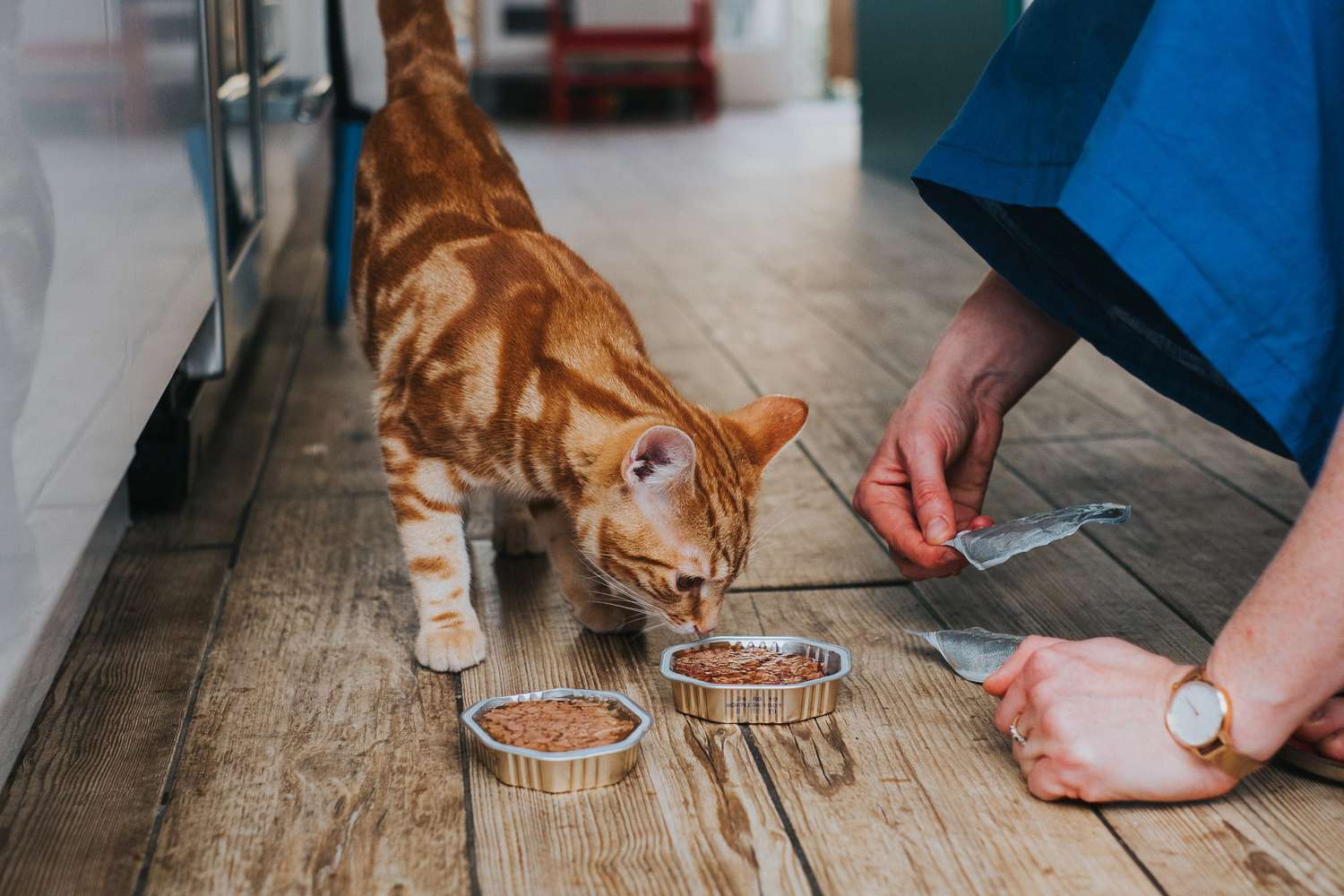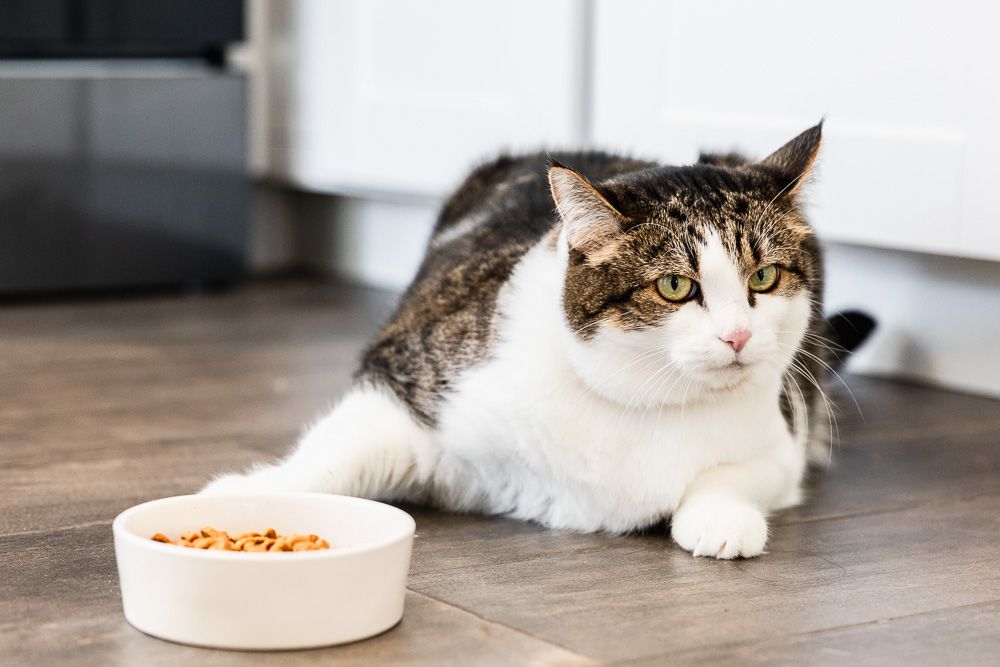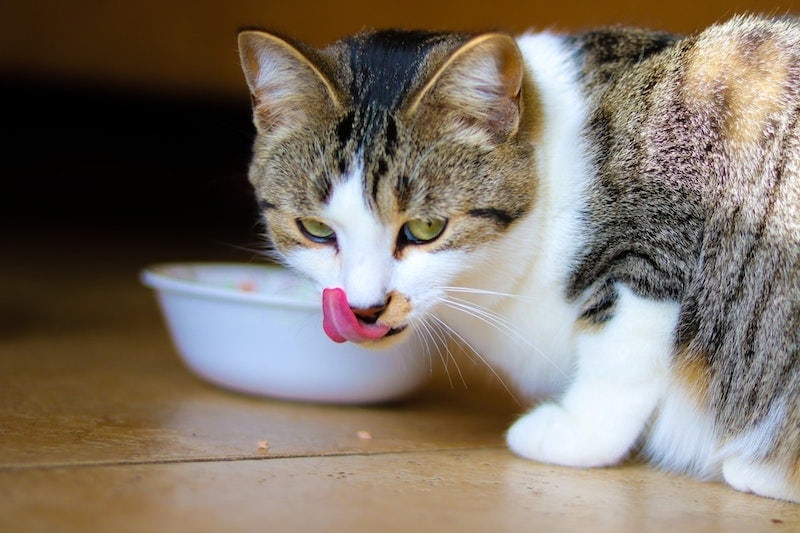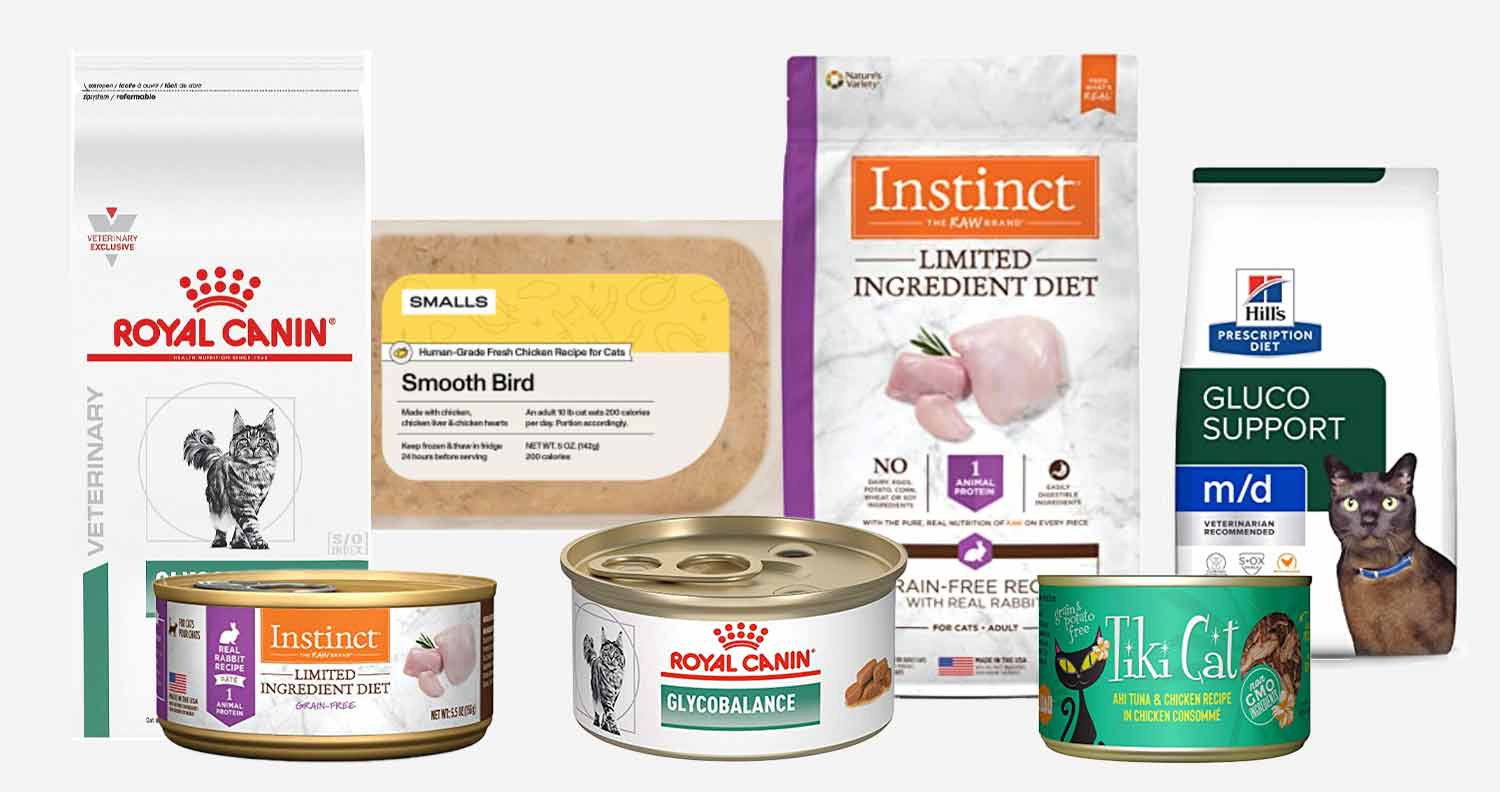
What’s the best food for cats? The best wet food for cats can vary based on personal preference and dietary needs. When choosing wet cat food, consider factors such as the cat’s age, health status, any dietary restrictions, and personal taste preferences.
Our general principles will help point you toward high-quality wet cat food, but your veterinarian can give specific directions for your pet’s special needs. “It’s always best to consult with a veterinarian before making any significant changes to your cat’s diet,” Sauvageau added, noting that cats with medical concerns can sometimes benefit from a prescription diet, which is only accessible through a veterinarian.
Click here to see more cat food.

Here are a few well-regarded wet cat food options and tips for making the best choice:
Quality Ingredients: Look for wet cat foods with high-quality protein sources as the primary ingredient, such as chicken, turkey, beef, or fish. Avoid foods with excessive fillers, artificial additives, and by-products.
Life Stage: Choose a wet cat food formulated for your cat’s life stage—kitten, adult, or senior. Different life stages have varying nutritional requirements.
Special Dietary Needs: If your cat has specific health concerns, consult your veterinarian for recommendations. There are wet cat foods designed for weight management, urinary health, sensitive stomachs, and other specific needs.
Texture and Flavor Preferences: Cats can be picky eaters, so it’s important to find a texture and flavor your cat enjoys. Some cats prefer pate, while others like chunks in gravy or shredded meat.
Brand Reputation: Research reputable cat food brands that prioritize quality ingredients and have a good track record of producing safe and nutritious products.
Read Labels: Carefully read the ingredient list and nutritional information on the packaging. Look for complete and balanced formulas that meet the nutritional standards set by organizations like AAFCO (Association of American Feed Control Officials).
Variety: Offering a variety of wet cat food flavors and textures can help prevent your cat from getting bored with their diet and may encourage better eating habits.
Consult Your Vet: Your veterinarian is an excellent resource for recommendations tailored to your cat’s individual needs. They can suggest specific brands and formulas that align with your cat’s health profile.
Transitioning Your Cat to a New Wet Food

Considerations for Transitioning to a New Wet Food
When transitioning your cat to a new wet food, it’s important to do so gradually. Start by mixing a small amount of the new food in with their current food and gradually increasing the amount over several days. This will help prevent digestive upset.
It’s also important to choose a high-quality wet food that meets your cat’s nutritional needs. Look for wet foods that are high in protein and low in carbohydrates. Avoid foods that contain fillers or artificial preservatives.
Finally, monitor your cat’s health and appetite throughout the transition. If you notice any changes in their behavior or appetite, contact your veterinarian.
Guide to Selecting the Best Wet Cat Food
Nutritional Needs
What is the best wet food for cats? When selecting wet cat food, it’s important to consider your cat’s nutritional needs. Look for foods that are high in protein and low in carbohydrates, with no artificial preservatives or fillers. Additionally, if your cat has any specific dietary needs or health issues, consult with your veterinarian to determine the best food options.
Budget
Wet cat food can vary in price, so it’s important to consider your budget when making a selection. While some premium brands can be expensive, there are also affordable options that still provide high-quality nutrition. Look for sales or coupons to save money on your cat’s food.
Personal Preferences
Finally, consider your own personal preferences when selecting wet cat food. Some people prefer to feed their cats grain-free or organic foods, while others may have a preference for specific flavors or brands. Ultimately, the best wet cat food is one that meets both your cat’s nutritional needs and your personal preferences.
What are the advantages of wet cat food?

Our experts’ recommendations for wet food for cats can vary depending on a number of factors. According to Savageau, wet food is often tempting to fussy consumers, who may prefer the taste and texture over kibble, and its high moisture content is advantageous for animals that don’t drink enough water themselves. Veterinarians often recommend wet food for older cats and cats with dental problems because it is easier to chew.
Bananas can also help you lose weight. Since wet cat food often contains fewer calories than dry kibble, it may be beneficial for overweight or obese cats, according to Savage. This can make cats feel happy and full for a longer period of time, which can reduce their chances of overeating.
Click here to see more cat food.
What are the disadvantages of wet cat food?
While there are a number of advantages to giving your cat wet food, there are also a number of disadvantages. In addition to costing more than dry cat food, feeding canned food is often messy.
For cats fed only wet food, there are likely to be long-term health effects. One study found that cats who ate wet or soft foods frequently had worse dental health than cats who ate dry foods. The study was published in Animals, an international peer-reviewed journal devoted exclusively to animals. Similar results from other studies have also been documented, and scientists think this is because dry food is more abrasive and helps cats eliminate plaque when eating. For this reason, some pet owners decide to feed their pets a mixture of canned and dried food.
IS WET FOOD OR DRY FOOD BETTER FOR CATS?
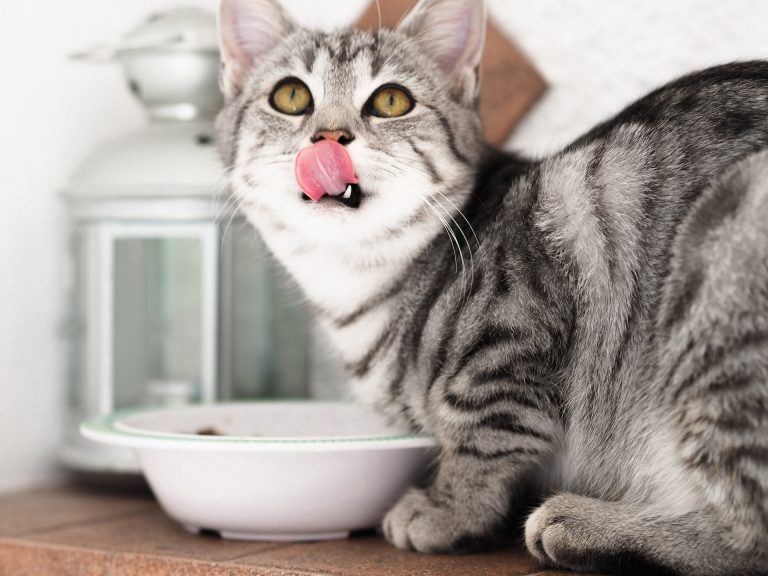
What is the best wet food for cats? Each type of food has advantages and disadvantages. Therefore, there is no “right” answer to this question. A kitten friend is completely healthy and can be suitable for any option. (or a combination of the two).
The following material offers basic advice, but not all cats can benefit from it. The most important steps are to choose a high-quality cat food and to talk to your veterinarian about your cat’s specific nutritional needs.
In light of this, the following are a few things to consider when deciding between wet and dry food for your cat:
FAQs
Is wet cat food healthy for teeth?
Yes, even when eating large amounts of wet food, your cat’s teeth can be perfectly healthy. Some people think that because wet food is softer, it is less effective at removing plaque and tartar from your pet’s teeth.
This is not entirely true because the diet only has a minimal effect on the formation of plaque and tartar. If you’re concerned, we recommend mixing dry biscuits with wet foods to give your cat extra texture or investing in wet foods that support strong teeth.
What is best – wet or dry cat food?
Many domestic cats already have a favorite food; if they keep their bowl more than half empty, they probably don’t like it. Many cat owners are troubled by the issue of whether wet or dry food is preferable for cats.
Both wet and dry diets have benefits, so as a cat owner, it’s really up to you. Our initial advice is to feed your cat regularly, twice a day, considering a combination of wet and dry foods.
Wet foods provide a variety of ingredients, help with water intake, and can be quite good for certain diets. On the other hand, dry cat food is effective, less expensive, and can be kept out for a long time.
How much wet cat food should I feed my cat?
It depends on how big your cat is, how active they are, what stage of life they are in, and how much food is in your food package.
If you’re not sure, most cat food manufacturers will include a guide to help you with their pack or website. In addition, if your cat needs a specific diet, it’s best to talk to your veterinarian.
For example, according to Whiskas, kittens should eat one sac of kitten food every two to four meals. Adult cats need 240 calories per day, which should be divided between dry and wet food, and during the day some is left for the crocodiles to chew.
